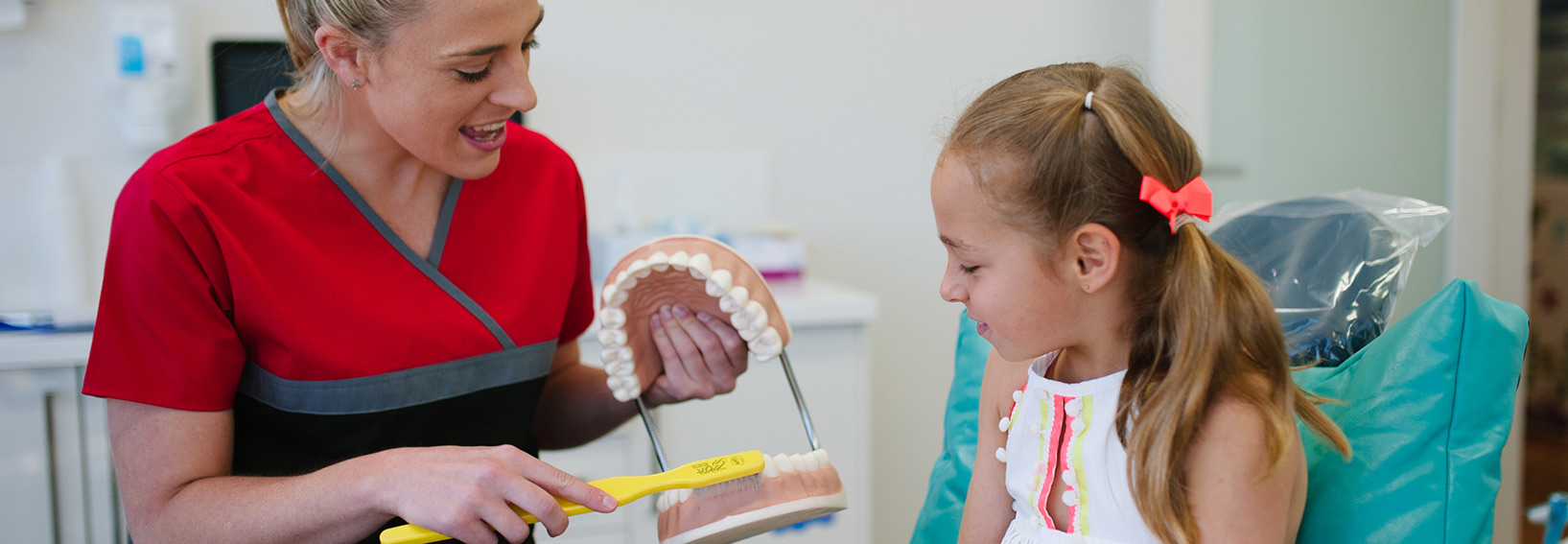5 things to look for in a dentist for your child.
1. Your child likes their dentist
For older children, liking their dentist (and therefore listening to their advice) becomes really important when we think about motivation and compliance for regular brushing and healthy diets. Take this with a grain of salt for very young children, or those with a temperament that leads them to be wary of new adults! In general, your dentist should have a natural affinity for young children and make them feel comfortable, giving them time and space to get used to their surroundings.
2. They know that the guidelines recommend a 12-month visit and are happy to see very young children.
Two is too late. The almost invisible signs of early decay can start from as young as 12 months of age. Every year, we are seeing more and more children needing extensive dental care at devastatingly young ages. Early visits allow us to identify children who might be at risk of dental problems (it’s a complex mix of things and ANY child can be affected) and put some stops in place to help you minimise the chance of your child ever needing dental surgery.
3. You know what’s going on in your child’s mouth and what to expect next.
Let’s face it – dentists are often socially pretty awkward and I don’t think many of us are about to win any awards for being Dr Cool. But you should be aware of what condition your child’s mouth is in and what dental milestones are next. Things should be explained in easy to understand language. We often use photos of individual teeth to show parents particular features like deep grooves, enamel defects and decay.
You should know what teeth are about to come into the mouth and what to look out for with the 2 year old molars and first adult molars (enamel defects are common). As children get older, you should be getting updates on how the teeth are fitting in and their bite, how their brushing is going and how to introduce flossing.
4. They take time
Your dentist or Oral Health Therapist should take the time each visit to teach your child what plaque is and where it is on their teeth (we use a coloured gel that shows up plaque) along with techniques on how to brush it off effectively. Your child should be learning how to floss, and how to start making their own healthy food and drink choices.
5. They follow several really important guidelines:
- X-rays
These are the small x-rays of the teeth taken with a film inside the mouth (not the full-mouth x-rays). The guidelines state these should be taken at a dental visit where all the molars have come through and cooperation permits. Early decay that starts between the teeth is invisible to the naked eye and only an x-ray can let us know if it’s there.
- Fluoride
Concentrated fluoride should be applied every 6 months. There is a large amount of evidence showing this is very good at preventing decay
- Early intervention for decayed teeth
More of a philosophy rather than a guideline, we believe in treating decayed teeth early and with materials that will see that tooth through to falling out by itself. Decay is a chronic disease caused by bacteria that is best removed from the mouth before it can affect other teeth (particularly new adult teeth).
